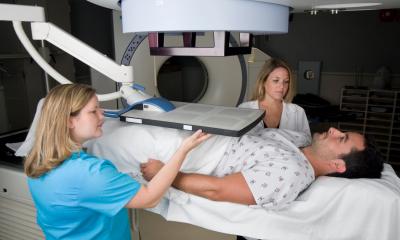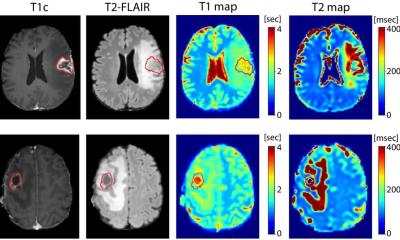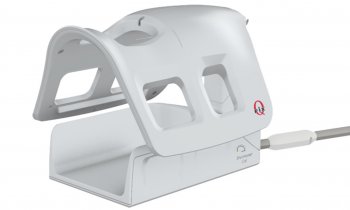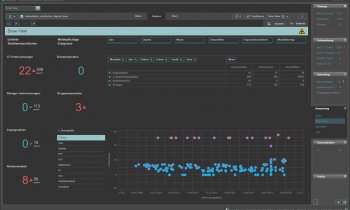Targeting several tumours simultaneously
]‘We are very pleased to be able to offer our patients top quality and, most importantly, very precise radiotherapy,’ said Professor Wolfgang Mohnike, Medical Director of the Diagnostic and Therapeutic Centre (DTZ) in Berlin – one of the leading outpatient cancer centres in the city. The newly equipped Radiotherapy Centre at the DTZ was inaugurated at the beginning of June and the new equipment – the TomoTherapy HD and the linear accelerator Elekta 160 MLC - was introduced to the public.

Using TomoTherapy HD, the X-ray source moves around the patient in a 360o rotation so that the tumour is radiated from all sides during treatment and its volume is optimally targeted. Combined with a fully automated examination table, this all-round radiation also enables the sequential treatment of up to three tumours simultaneously. HD stands for Helical Direct. ‘Helical’ refers to the 360° rotational movement of the X-ray source around the patient; ‘Direct’ refers to the ability to choose a certain rotational area, i.e. being able to stop the rotation during the treatment process, as is necessary in breast cancer treatment.
The rotation is unique to this new technology. ‘We can, for instance, radiate the entire neural axis, i.e. the entire brain including the complete spinal cord in one treatment session,’ explained Dr Hendrik Herm, Radiation Specialist at the DTZ. ‘Assuming you have a patient with lung cancer, an individual brain metastasis and a bone metastasis in the pelvic region,’ he said, ‘we used to have to separately adjust the X-ray source each time, depending on the location of the tumour or metastasis respectively, and the patient might have had to be moved. Now this this is fully automated and done in just one go.’
The radiation dose also can be individually adjusted during rotation and the radiation source reacts flexibly to changes in the radiation field, Dr Herm pointed out. This shortens the required treatment time significantly. ‘A simple prostate treatment can now be carried out in five minutes, more complicated and dispersed tumours can be radiated in up to 15 minutes,’ he explains.
Due to radiation from all angles around the body, the tissue surrounding tumours and organs can be far more effectively protected than before. This facilitates the radiation of highly sensitive areas, such as acoustic neuromas, and also enables re-radiation: ‘Previously it was only possible to treat vertebral tumours once, but with the 360o rotational radiation we can now treat them again if medically indicated, because the highly sensitive spinal cord can be completely spared from radiation,’ Dr Herm pointed out.
The TomoTherapy HD System is supplied with the PET-CT data on the position, size and characteristics of the tumour exactly as is with the help of the ‘syngo-via’ software. A low dose CT then double-checks the target volume again immediately before the start of the treatment to capture any possible changes which may have occurred. For prostate treatment in particular the status of the bladder and rectum are important in terms of tumour localisation and radiation.
From 1st July, the second TomoTherapy HD System in Germany (the first machine is located at Heidelberg University Hospital) will be operational at the DTZ. The treatment is available to all patients because both statutory and private medical insurers cover it.
10.07.2012








